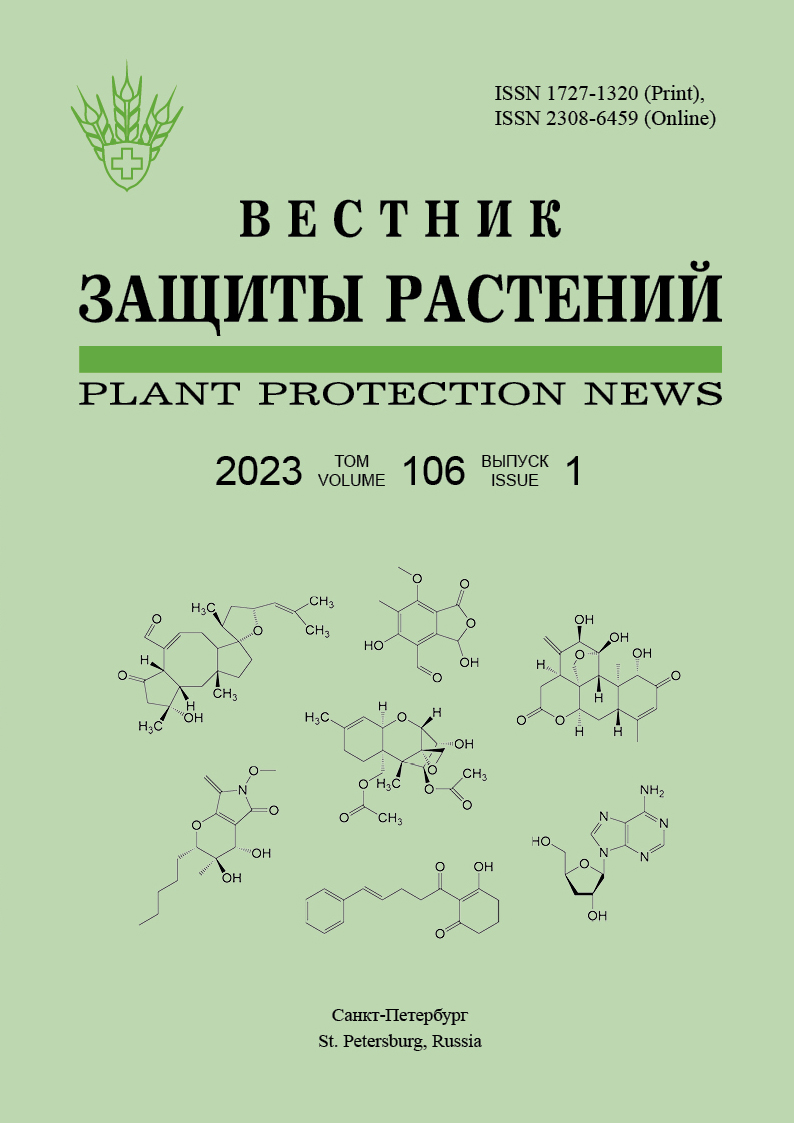Practical experience of breeding and use of predatory bug Podisus maculiventris in Western Siberia
Keywords:
Colorado potato beetle, predatory bug, entomophages, laboratory population, biotic potential, mixed feed, voracity, biological efficiencyAbstract
The predatory bug Podisus maculiventris is a multi-eating entomophages, promising for use in measures for the biological protection of potatoes from the Colorado potato beetle in Western Siberia. In order to reduce the economic costs of transportation and mass production of podizus, it is advisable to improve and adapt the technology of its breeding and use to the conditions of the region. Under laboratory conditions, the effectiveness of using different species of prey (larvae of the greater wax moth, diamondback moth, yellow mealworm beetle and vetch aphid) to maintain high indicators of the uterine culture of the predatory bug was revealed. With a mixed diet, a high survival rate of entomophage larvae was observed, the number of images of the next generation averaged 78.3% of the initial number, the weight of females and males increased to 74.8 and 56.0 mg, respectively, and fertility – 539.6 eggs per 1 female. In laboratory conditions, the voracity of the predator varied on average from 1.8 to 8.4 individuals of the Colorado potato beetle, depending on the stage of development of the entomophage and the age of the pest larvae. As a result of three-year field trials (2018-2020) on potatoes of the Yuna variety, the biological effectiveness of the entomophage against the Colorado potato beetle ranged from 66.2 to 85.4%, and with the combined use of the predatory bug and the biological preparation Bitoxibacillin increased to 98.5%. In 2020, the efficiency of the entomophages at the release in the ratio predator : prey – 1 : 5.0-6.5 on different varieties of potatoes was 62.9-75.0%.



